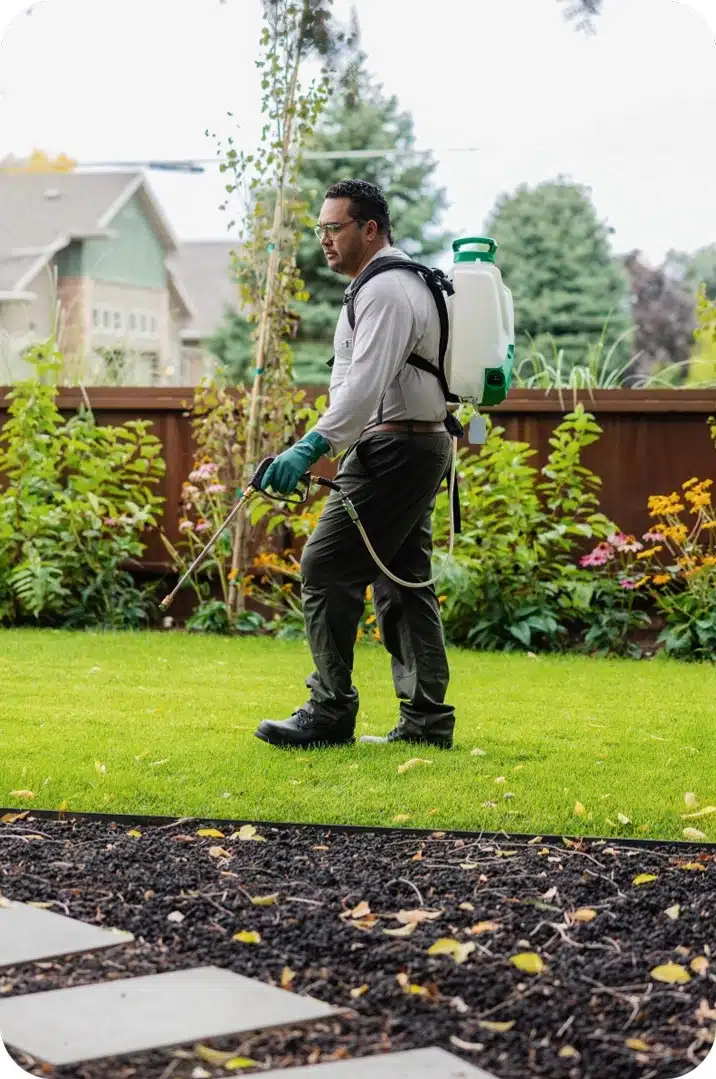A1 Charlotte Pest Control Companies - Your Regional Pest Professionals
A1 Charlotte Pest Control Companies - Your Regional Pest Professionals
Blog Article
Bed Insect Therapy Breakdown: Contrasting Chemical Vs. Non-Chemical Solutions
In the world of pest control, especially when handling the relentless issue of bed bugs, the choice in between chemical and non-chemical treatment remedies can be a pivotal one. Both strategies supply distinctive advantages and drawbacks, influencing elements such as effectiveness, safety and security considerations, and general cost. By taking a look at the nuanced details of each approach, a clearer understanding of which course to seek in dealing with a bed pest infestation can be attained.
Performance of Chemical Therapies
Chemical therapies for bed insect infestations have been widely identified for their potent and quick efficacy in getting rid of these parasites. When considering the performance of chemical treatments, it is vital to recognize that they can supply a thorough and fast solution to a bed bug trouble. Expert pest control operators commonly count on pesticides to target bed insects at various phases of their life process, including eggs, adults, and fairies. These chemicals normally function by interrupting the bed insects' anxious system, causing paralysis and ultimate fatality.
In addition, chemical treatments have the benefit of providing recurring impacts, implying that they can remain to get rid of bed bugs even after the preliminary application. This recurring activity is especially beneficial in combating any type of possible re-infestations. Additionally, the quick action of chemical treatments can bring alleviation to people dealing with severe bed insect infestations, enabling them to gain back control of their space promptly.
Safety And Security Interest In Chemical Solutions
One critical facet that calls for careful consideration when using chemical options for bed pest therapy is ensuring the safety of occupants and the atmosphere. While chemical therapies can be reliable in eradicating bed pests, they may pose threats otherwise handled properly. Among the key safety concerns with chemical solutions is the possible harm they can trigger to human health and wellness. Exposure to certain chemicals used in bed bug treatments can result in respiratory concerns, skin irritability, or other adverse reactions, specifically in individuals with pre-existing conditions or sensitivities. Additionally, inappropriate application or dose of chemical pesticides can result in toxic deposits remaining in the cured location, posturing long-term wellness threats to owners.
Additionally, the environmental effect of chemical remedies is one more significant factor to consider. Some pesticides utilized in bed bug therapies might be hazardous to advantageous bugs, wild animals, and environments if they leach right into the soil or water systems. It is vital to utilize chemical therapies carefully, following security guidelines, and considering much less hazardous alternatives to minimize these dangers and guarantee the try this risk-free and efficient monitoring of bed bug problems.
Benefits of Non-Chemical Approaches
Taking into consideration the possible security worries and environmental impact linked with chemical services for bed pest therapy, checking out non-chemical approaches offers a promising choice with a number of distinct advantages. Non-chemical treatments are environmentally friendly, as they do not contribute to air or water air pollution, making them a lasting choice for insect control.
Additionally, non-chemical services can be reliable in targeting bed bugs, including hard-to-reach locations where chemical treatments might not penetrate - A1 charlotte bed bug exterminator. Techniques such as warmth treatment, vacuuming, heavy steam cleaning, and mattress encasements supply detailed obliteration without the usage of unsafe chemicals.
Limitations of Non-Chemical Treatments

In addition, non-chemical therapies typically require numerous applications to achieve successful elimination. This can be time-consuming and may not constantly assure full elimination of all bed bugs and their eggs, particularly in hard-to-reach or concealed areas.
Additionally, the success of non-chemical treatments heavily counts on appropriate execution and thoroughness, which can be testing for individuals without professional proficiency. Insufficient application of non-chemical approaches might result in incomplete elimination, bring about persistent invasions and the requirement for added therapies.
Consequently, while non-chemical therapies have their advantages, it is vital to recognize these limitations and consider them when figuring out check my site one of the most effective method for handling bed bug infestations.
Expense Contrast: Chemical Vs. Non-Chemical Options
Given the limitations linked with non-chemical treatments, an important facet to evaluate in the context of bed insect monitoring is the cost contrast in between chemical and non-chemical choices. In comparison, non-chemical treatments like warmth therapy or steam can be much more costly, with costs ranging from $1,000 to $6,000 for a whole home. While the initial expense of chemical therapies may seem reduced, multiple treatments might be required to completely get rid of the invasion, possibly increasing the total expense.
Final Thought

Thinking about the prospective safety and security worries and ecological impact connected with chemical solutions for bed Recommended Reading bug treatment, discovering non-chemical approaches provides a promising option with several distinctive benefits.Offered the constraints linked with non-chemical treatments, an essential aspect to evaluate in the context of bed insect management is the cost contrast in between chemical and non-chemical options. In contrast, non-chemical treatments like heat therapy or steam can be extra expensive, with expenses varying from $1,000 to $6,000 for an entire home. While the preliminary expense of chemical therapies might seem reduced, multiple therapies may be called for to fully eliminate the invasion, possibly enhancing the general cost.In conclusion, when comparing chemical and non-chemical bed bug therapy alternatives, it is important to consider effectiveness, safety, advantages, constraints, and cost.
Report this page